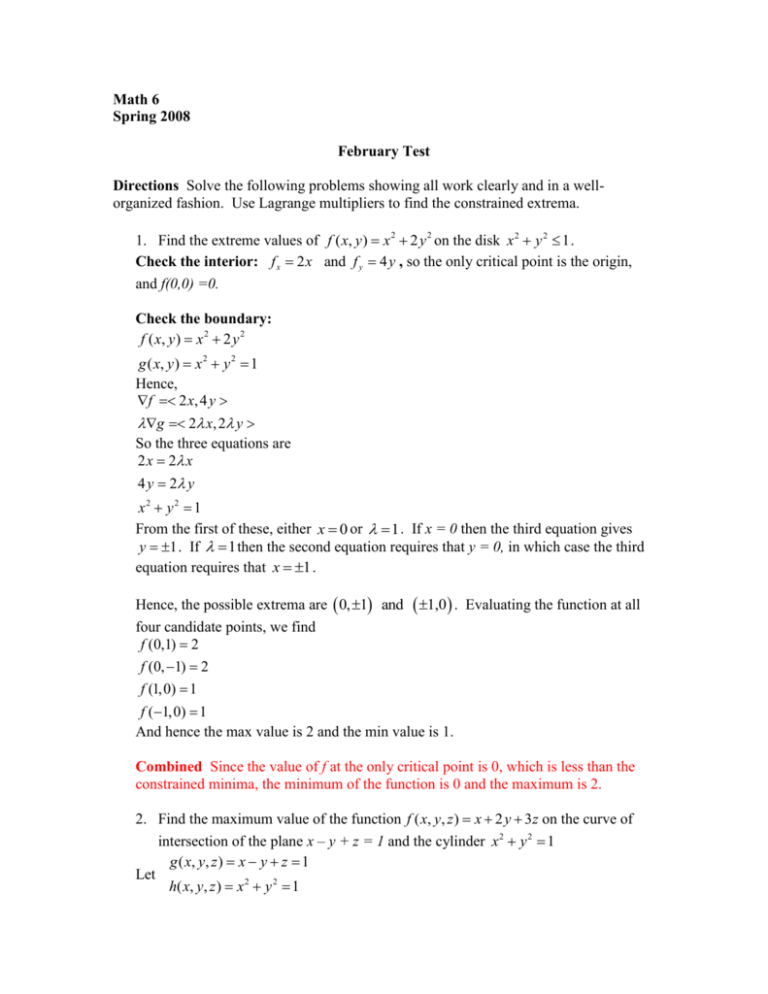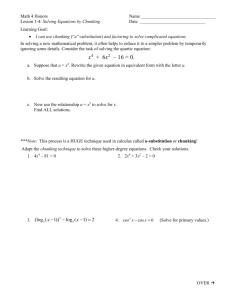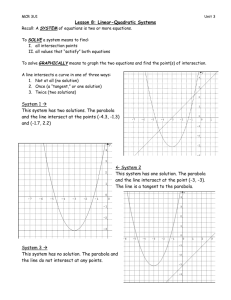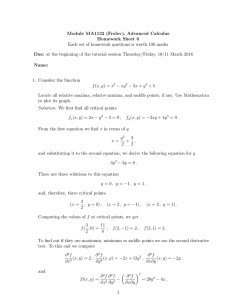Math 6
advertisement

Math 6 Spring 2008 February Test Directions Solve the following problems showing all work clearly and in a wellorganized fashion. Use Lagrange multipliers to find the constrained extrema. 1. Find the extreme values of f ( x, y) x 2 2 y 2 on the disk x 2 y 2 1 . Check the interior: f x 2 x and f y 4 y , so the only critical point is the origin, and f(0,0) =0. Check the boundary: f ( x, y ) x 2 2 y 2 g ( x, y ) x 2 y 2 1 Hence, f 2 x, 4 y g 2 x, 2 y So the three equations are 2 x 2 x 4 y 2 y x2 y 2 1 From the first of these, either x 0 or 1 . If x = 0 then the third equation gives y 1 . If 1 then the second equation requires that y = 0, in which case the third equation requires that x 1 . Hence, the possible extrema are 0, 1 and 1,0 . Evaluating the function at all four candidate points, we find f (0,1) 2 f (0, 1) 2 f (1,0) 1 f ( 1,0) 1 And hence the max value is 2 and the min value is 1. Combined Since the value of f at the only critical point is 0, which is less than the constrained minima, the minimum of the function is 0 and the maximum is 2. 2. Find the maximum value of the function f ( x, y, z ) x 2 y 3z on the curve of intersection of the plane x – y + z = 1 and the cylinder x 2 y 2 1 g ( x, y , z ) x y z 1 Let h ( x, y , z ) x 2 y 2 1 Then f 1, 2,3 g , , h 2 x, 2 y,0 And so, for f g h , 1 2 x 2 2 y 3 Combining the last and first equations, 2 x 2 , so x and second equations gives y 1 . Combining the third 5 . 2 29 29 25 and . 1 , so 2 2 4 2 4 2 x 29 5 Thus, y 29 7 z 1 x y 1 29 2 5 7 2 So, f 3 1 3 29 29 29 29 Hence, 1 2 And so the max is 3 29 3. In finding the largest value of a four-variable function subject to three constraints, how many equations in how many unknowns would the Lagrange method require? 7 Where specifically do the various needed equations come from? From the four components of the gradient of the four-variable function and the three constraint conditions. Bonus: What’s the equation of the curve of intersection of the two surfaces in the second problem? cos t,sin t,1 cos t sin t . If you use Mathematica’s ParametricPlot3D with the previous argument and let t run from 0 2 , you get an ellipse that looks like the appropriate curve of intersection between the unit cylinder and the given plane: Y 1.0 0.5 1.00.50.0 0 1 2 1.0 0.5 0.0 X 0.5 1.0 Z











